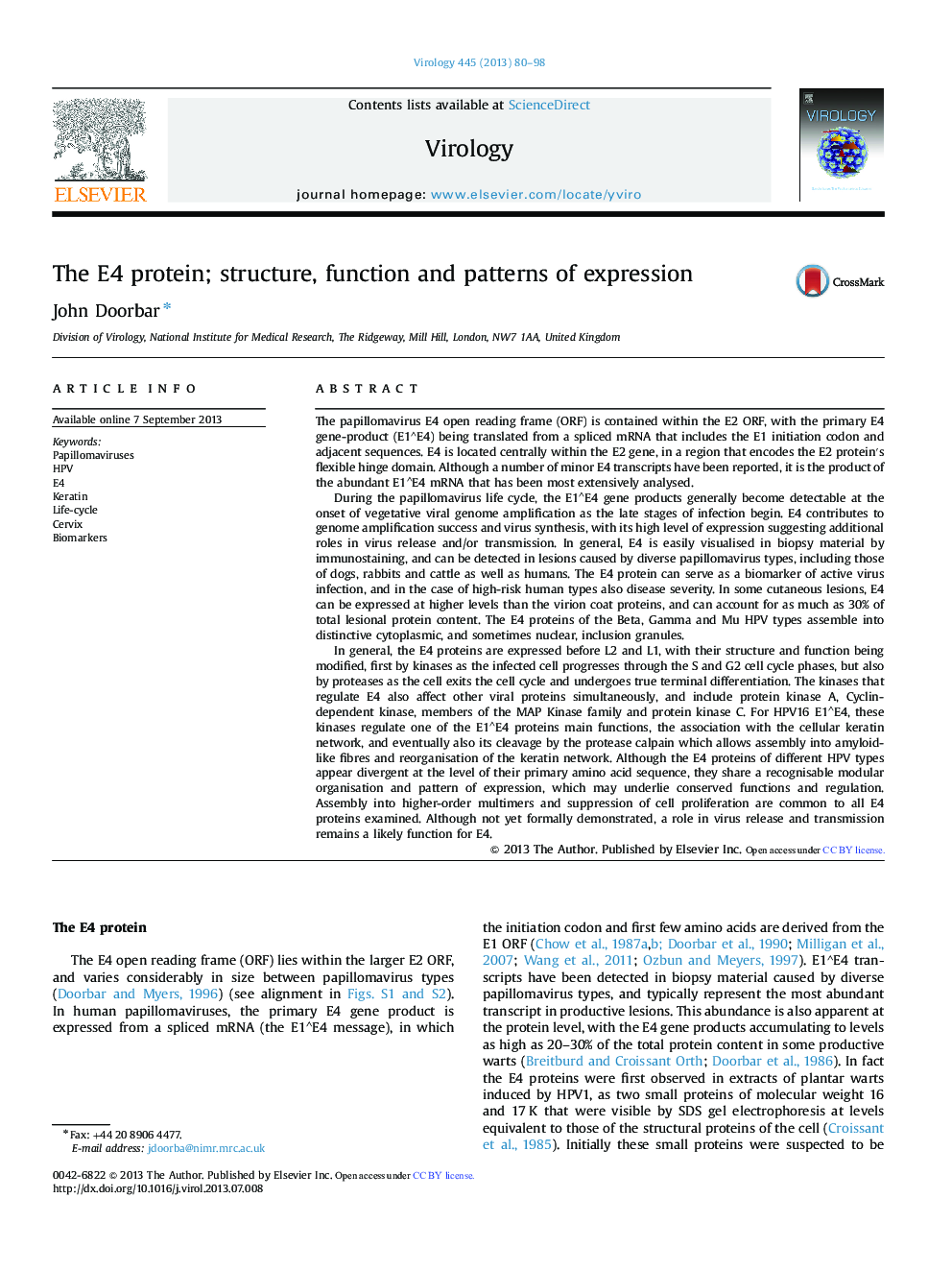| کد مقاله | کد نشریه | سال انتشار | مقاله انگلیسی | نسخه تمام متن |
|---|---|---|---|---|
| 6140804 | 1594258 | 2013 | 19 صفحه PDF | دانلود رایگان |

- E4 gene products have a modular structure, and are expressed from the E1â§E4 spliced mRNA.
- E4 proteins are modified during epithelial differentiation by phosphorylation and proteolysis.
- The E4 proteins contribute to genome amplification-efficiency and virus synthesis.
- E4 proteins are abundantly expressed and may facilitate efficient virus release and transmission.
- High-risk E4 proteins are deposited as amyloid fibres and can be used as infection biomarkers.
The papillomavirus E4 open reading frame (ORF) is contained within the E2 ORF, with the primary E4 gene-product (E1â§E4) being translated from a spliced mRNA that includes the E1 initiation codon and adjacent sequences. E4 is located centrally within the E2 gene, in a region that encodes the E2 proteinâ²s flexible hinge domain. Although a number of minor E4 transcripts have been reported, it is the product of the abundant E1â§E4 mRNA that has been most extensively analysed.During the papillomavirus life cycle, the E1â§E4 gene products generally become detectable at the onset of vegetative viral genome amplification as the late stages of infection begin. E4 contributes to genome amplification success and virus synthesis, with its high level of expression suggesting additional roles in virus release and/or transmission. In general, E4 is easily visualised in biopsy material by immunostaining, and can be detected in lesions caused by diverse papillomavirus types, including those of dogs, rabbits and cattle as well as humans. The E4 protein can serve as a biomarker of active virus infection, and in the case of high-risk human types also disease severity. In some cutaneous lesions, E4 can be expressed at higher levels than the virion coat proteins, and can account for as much as 30% of total lesional protein content. The E4 proteins of the Beta, Gamma and Mu HPV types assemble into distinctive cytoplasmic, and sometimes nuclear, inclusion granules.In general, the E4 proteins are expressed before L2 and L1, with their structure and function being modified, first by kinases as the infected cell progresses through the S and G2 cell cycle phases, but also by proteases as the cell exits the cell cycle and undergoes true terminal differentiation. The kinases that regulate E4 also affect other viral proteins simultaneously, and include protein kinase A, Cyclin-dependent kinase, members of the MAP Kinase family and protein kinase C. For HPV16 E1â§E4, these kinases regulate one of the E1â§E4 proteins main functions, the association with the cellular keratin network, and eventually also its cleavage by the protease calpain which allows assembly into amyloid-like fibres and reorganisation of the keratin network. Although the E4 proteins of different HPV types appear divergent at the level of their primary amino acid sequence, they share a recognisable modular organisation and pattern of expression, which may underlie conserved functions and regulation. Assembly into higher-order multimers and suppression of cell proliferation are common to all E4 proteins examined. Although not yet formally demonstrated, a role in virus release and transmission remains a likely function for E4.
Journal: Virology - Volume 445, Issues 1â2, October 2013, Pages 80-98